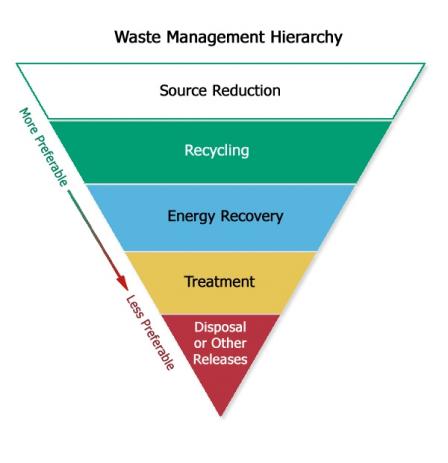What Can TRI Tell You About Risk?
The Toxics Release Inventory (TRI) can provide you with information about releases of toxic chemicals from industrial facilities throughout the United States. Although TRI can't tell you whether or to what extent you've been exposed to these chemicals, it can be used as a starting point in evaluating potential risks to human health and the environment.
On this page:
- Is my health at risk because of toxic chemicals in my community?
- How can I find out more about the toxicity of chemicals released in my community?
- How is EPA ensuring that facilities don't pose significant risks to my community?
- How does my community compare to others in the United States?
Is my health at risk because of toxic chemicals in my community?
Your individual risk is determined by many factors, such as:
- The toxicity of the chemical(s)
- The quantity of the chemical(s)
- The route of exposure (air, water, land)
- How often you were exposed
- The fate of the chemical in the environment
TRI contains some of this information—on what chemicals are released from industrial facilities, the total amount of each chemical released, and the amounts released to air, water and land.
Overview of Factors that Influence Risk
If you are interested in estimating immediate or long-term risks in your community, you will need to combine TRI with other information, such as the toxicity of the chemical and the chemical's transportation and fate.
It is important to note that EPA and other government agencies implement environmental regulations to reduce potential risks to human health and the environment.
Understanding Risk
In some circumstances, chemicals can pose risks to human health and the environment. It is useful to think about whether a particular risk is "significant", or worthy of concern relative to other risks. In general, industrial facilities that are operating in compliance with environmental regulations have controls in place that reduce releases of toxic chemicals and the potential risks they might pose to human health and the environment.
To read more about risk and its assessment and management, go to EPA's risk assessment portal.
How can I find out more about the toxicity of chemicals released in my community?
Determining whether the specific chemicals present in your community may pose a risk to you or others is very complex. Keep in mind that while TRI captures a significant portion of toxic chemicals in wastes managed by industrial facilities, it does not cover all toxic chemicals, or all sources of toxic chemicals in a community. For example, other potential sources of chemical exposure that would not be in TRI include exhaust from cars and trucks, chemicals in consumer products and chemical residues in food and water.
Information about specific toxic chemicals and the effects of exposure on human health can be found in:
- Agency for Toxic Substances and Disease Registry (ATSDR)'s Toxic Substances Portal
- TRI's Other Toxic Chemical Resources webpage
How is EPA ensuring that facilities don't pose significant risks to my community?
EPA, together with state and tribal governments, implements many laws that control emissions of toxic chemicals to the air, land and water. Regulations written under these laws often require facilities to use approved control technologies and methods to reduce or eliminate releases and may tell facilities how to store or dispose of chemicals in wastes.

To help further reduce potential risks, EPA encourages facilities to prevent or reduce pollution at the source and to promote recycling whenever possible. TRI data can give you insights into the waste management activities undertaken by facilities.
How does my community compare to others in the United States?
Several tools are available to help compare specific metrics across communities, including:
- Where You Live: Find summary TRI data for states, zip codes, metropolitan areas, watersheds, and tribal lands. Based on the most recent TRI National Analysis data.
- Risk-Screening Environmental Indicators (RSEI) tool: Compare location-specific risks using relative risk estimates.
- EJ Screen: Combine environmental and demographic indicators in maps and reports for a specific location.
- National Air Toxics Assessment (NATA): Compare air pollution risks from many sources across the U.S.

